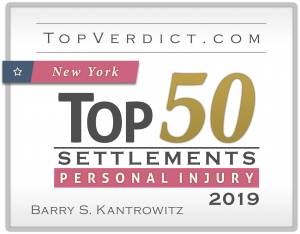 Hiring a personal injury attorney is the start of a legal process aimed at holding negligent parties liable for wrongdoing and securing compensation for the victims. One of the first questions plaintiffs have for attorneys is, “How long will it take to reach a settlement or verdict?”
Hiring a personal injury attorney is the start of a legal process aimed at holding negligent parties liable for wrongdoing and securing compensation for the victims. One of the first questions plaintiffs have for attorneys is, “How long will it take to reach a settlement or verdict?”
The Court Statistics Project found that nearly half of personal injury cases were resolved within a year. By two years, three quarters of cases were resolved. The median case processing time was 13.7 months.
The personal injury attorneys in NY and NJ at Kantrowitz, Goldhamer & Graifman will communicate with each client every step of the way to be sure you feel valued and never brushed aside. Here are the general steps of litigation you can expect:
Stage 1: Meeting with an Attorney
You have up to 2 years to file a personal injury lawsuit in New York or New Jersey. Keep in mind the clock doesn’t necessarily start ticking on the date an incident occurs. Sometimes the timeline begins the date you discovered you were injured, or the date you discovered some else’s negligence was to blame for your injuries. It’s best to speak with an experienced personal injury attorney as soon as possible to begin investigating your case. These calls are confidential and free of charge, so you have nothing to lose and everything to gain. You will need to sign a release form to give the lawyers access to your medical records, police reports, and other personal information related to the case.
Stage 2: Initiating Court Papers
If the attorneys are confident they can handle and successfully litigate your case, filing a complaint and a summons will be the next step. In most cases, the defendants have up to 30 days to respond. The defendant’s answer may come in the form of an admittance, a denial, or an argument that there is insufficient knowledge to admit or deny. Defendants may petition a judge to dismiss the motion early. Sometimes a counterclaim is filed against the plaintiff.
Stage 3: Fact-Finding and Discovery
Discovery involves written interrogations, document production, and depositions. Your attorney will assemble facts and documents from all sources possible to build a substantial case. Requests for admission can be a powerful tool in admitting or denying certain facts in the presentation before judge and/or jury. Depositions are sworn statements that are admissible in court. The best attorneys are adept at asking the right questions to get the testimony they need. They know how to poke holes in the opposition’s story, discredit witnesses, and challenge the legal arguments the opposing case hinges on to win.
Stage 4: Motions To Resolve Before Trial
Sometimes lawsuits can be dismissed in the early stages of litigation due to lack of subject matter, lack of jurisdiction, improper venue, insufficient service of process, or failure to state a proper claim. Summary judgement motions can end the case before trial if the facts are not in dispute and both sides accept the judge’s review.
Stage 5: Settlement
Many defendants will opt to settle before enduring the expense, public exposure, and difficulty of a court trial. Of course, what they’re willing to pay is not always favorable to the plaintiffs. Ultimately, you can choose to accept a fair settlement or you may decide to take your case all the way to court.
Stage 6: Trial
If the case is set for trial, a jury will be selected. The case will involve opening statements, witness testimony, cross-examination, closing arguments, jury deliberation, and a verdict. The trial itself typically takes at least three days, and wraps up in five. Trials involving complex evidentiary issues may take longer to complete.
Stage 7: Collecting Money After Judgment
Collecting a judgment can sometimes take extensive work after a successful verdict. Attorneys may need to work out wage garnishment, assets liquidation, bankruptcy proceedings, or collection proceedings.
Stage 8: Appealing a Decision or Judgment
The losing side in he lawsuit has the chance to file an appeal. A panel of judges review the court proceedings to determine if protocol was followed and sufficient justice was served. If the party loses an appeal in state or federal court, they may still appeal to the Supreme Court if a federal or constitutional issue has been raised.
Contact KGG To Get The Ball Rolling on Your Lawsuit
Our Rockland County and Bergen County personal injury attorneys have provided plaintiffs with quality legal services since 1975. We’re big enough to handle the most complex cases, but we’re smart enough to handle your case with care. We’ve covered every type of personal injury claim, from vehicular accidents, slip-and-fall premises liability, and dog bites, to workplace injuries, product liability, and nursing home abuse. Call us toll-free today to start the legal process.
Additional “personal injury lawsuit timeline” resources:
- Bureau of Justice Statistics, Tort Cases in Large Counties, https://www.bjs.gov/content/pub/ascii/TCILC.TXT
- NY Times, The Longest Trial – A Post-Mortem; Collapse of Child-Abuse Case: So Much Agony for So Little, http://www.nytimes.com/1990/01/24/us/longest-trial-post-mortem-collapse-child-abuse-case-so-much-agony-for-so-little.html






